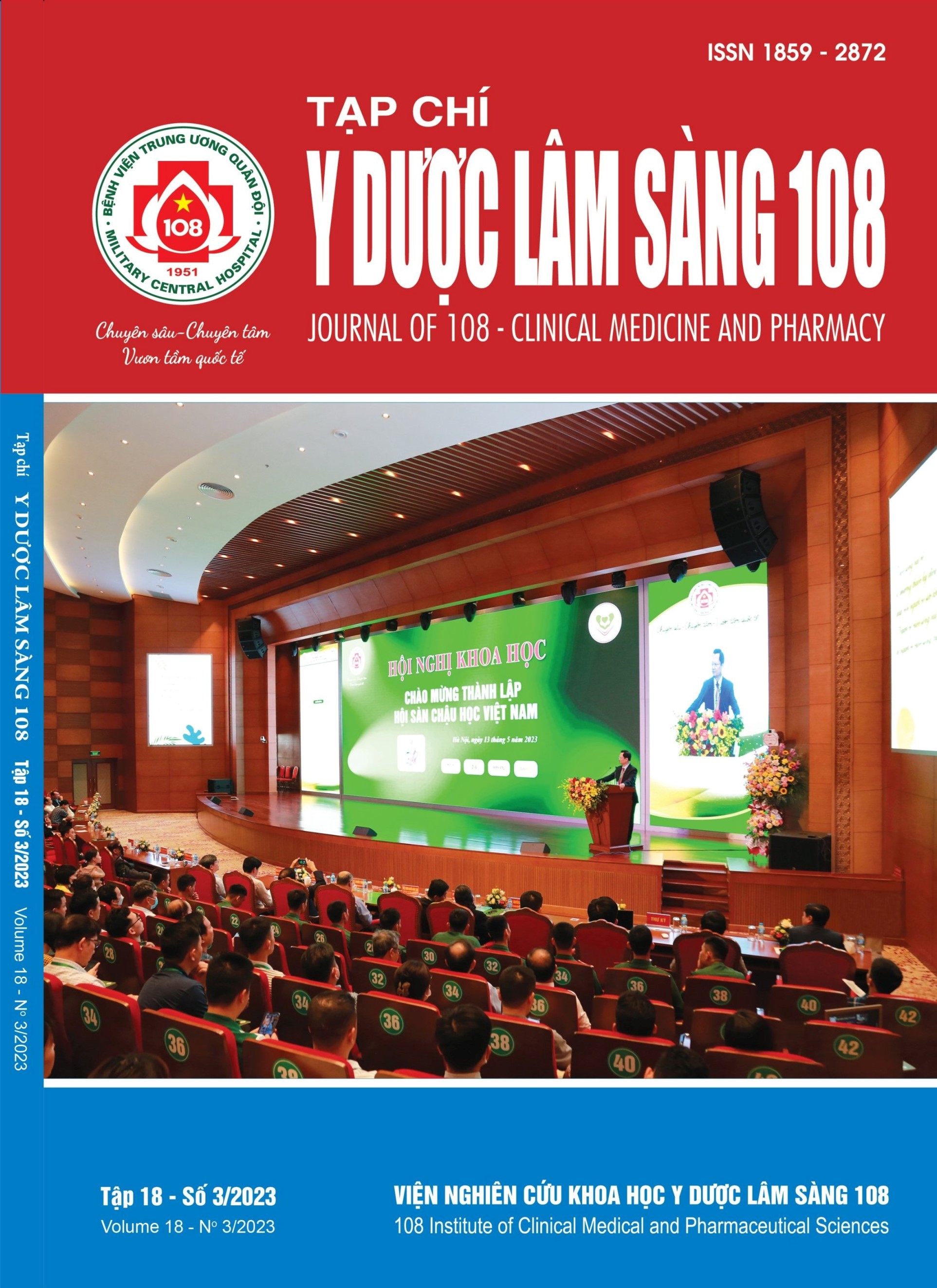Clinical symptoms in the intestine and extraintestinal manifescation in inflammatory bowel disease in 108 Military Central Hospital
Main Article Content
Keywords
Abstract
Objective: To evaluate the clinical symptoms in the intestine and extraintestinal manifestation in inflammatory bowel disease. Subject and method: 87 inpatients treated from October 2020 to September 2022 at 108 Military Central Hospital. A descriptive, cross-sectional study. Result: The mean age of the study was 43.8; men accounted for 64.4%; Crohn's accounted for 51.7% and ulcerative colitis accounted for 48.3%. The main clinical symptoms of Crohn's disease were abdominal pain 88.9%; digestive disorders (66.7%). The main symptom of ulcerative colitis was bloody stools (88%). Crohn's related to surgery accounted for 18.4%; cause of perforation accounted for 37.5%. There were 24.1% of patients with extra-intestinal symptoms: Joints (61.9%); mucosal skin (28.6%). Conclusion: Inflammatory bowel disease includes 2 Crohn's disease and ulcerative colitis. These diseases present clinical symptoms in the intestine and extra-intestinal symptoms. Extraintestinal manifestations of Crohn's disease are more common than ulcerative colitis.
Article Details
References
2. WY Mak et al (2020) The epidemiology of IBD: East meets West. Journal of Gastroenterology and Hepatology 35: 380-389.
3. Lichtenstein et al (2018) ACG Clinical Guideline: Management of Crohn’s Disease in Adults. Am J Gastroenterol 113:481-517.
4. Siew et al (2013) Incidence and phenotype of Inflammatory bowel disease based on results from the Asia-pacific Crohn’s and colitis epidemiology Study. Gastroenteroly 145: 158-165.
5. Wei et al (2013) A nationwide population-based study of the inflammatory bowel diseases between 1998 and 2008 in Taiwan. BMC Gastroenterology 13: 166.
6. Abdulrahman M et al (2014) Clinical epidemiology and phenotypic characteristics of Crohn’s disease in the central region of Saudi Arabia. The Saudi Journal of Gastroenterology 20(3): 162-169.
7. Sandra M et al (2012) Association of age at diagnosis and ulcerative colitis phenotype. Dig Dis Sci 57(9).
8. Joseph D (2017) Crohn disease: Epidemiology, diagnosis, and management. 2017 Mayo Foundation for Medical Education and Research n Mayo Clin Proc: 1-16.
9. Satsangi J (2006) The Montreal classification of inflammatory bowel disease: controversies, consensus, and implications. Gut 55: 749-753. doi: 10.1136/gut.2005.082909.
10. Javier P Gisbert et al (2008) Timing of surgery in Crohn’s disease: A key issue in the management. World J Gastroenterol 14(36): 5532-5539.
11. Jonathan S, Levine et al (2011) Extraintestinal Manifestations of Inflammatory Bowel Disease” Gastroenterology & Hepatology 7(4).
12. Istvan Fedor et al (2021) Temporal relationship of extraintestinal manifestations in inflammatory bowel disease. J. Clin. Med 10: 5984.
 ISSN: 1859 - 2872
ISSN: 1859 - 2872
